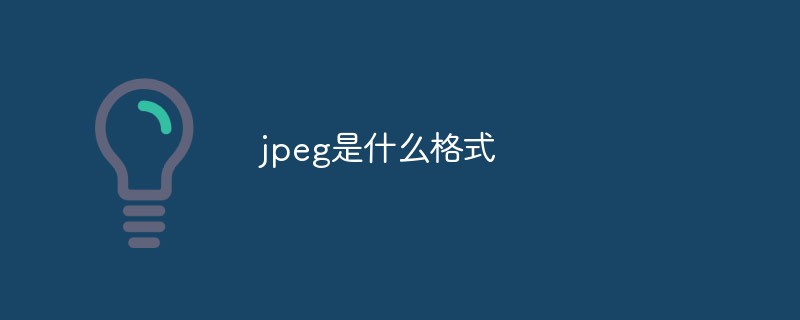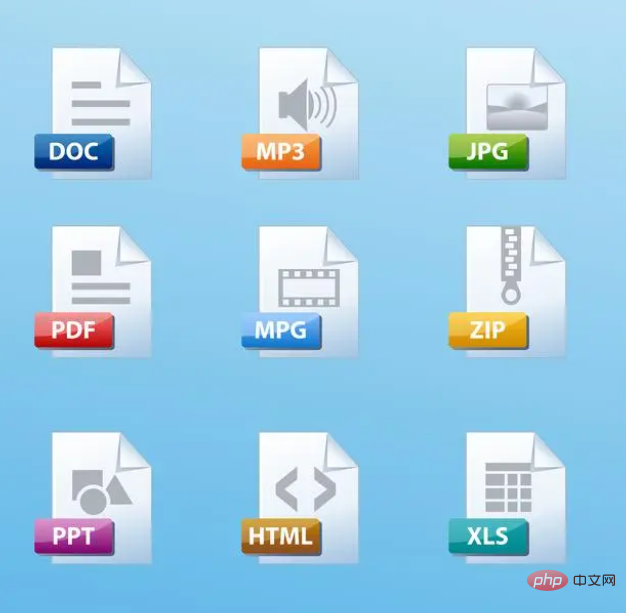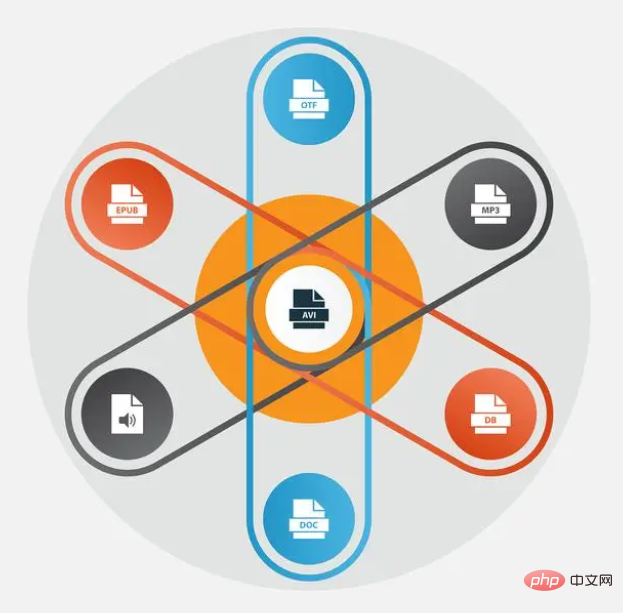
JPEG is an image format saved using lossy compression method, and the file suffix is ".jpg" or ".jpeg"; as a result of compression, the output image cannot take into account both quality and size. The JPEG format has long been the choice for storing and transmitting photographic images over the web, and almost all operating systems now have viewers that support the visualization of JPEG images, which are also often stored with the JPG extension.

The operating environment of this tutorial: Windows 7 system, Dell G3 computer.
JPEG (Joint Photographic Experts Group) is the product of the JPEG standard, which was developed by the International Organization for Standardization (ISO) and is a compression standard for continuous-tone still images. JPEG format is the most commonly used image file format, with the suffix .jpg or .jpeg.
JPEG is an image format saved using a lossy compression method. As a result of compression, the output image cannot compromise both quality and size. Users can adjust the compression level to achieve the desired quality level while reducing storage size. If you apply 10:1 compression to an image, the impact on image quality is negligible. The higher the compression value, the greater the degradation of image quality.

File Format Specification
The JPEG image file format was standardized by the Joint Photographic Experts Group, hence the name JPEG. This format has long been the choice for storing and transmitting photo images on the web. Almost all operating systems now have viewers that support the visualization of JPEG images, which are also typically stored with the JPG extension. Even web browsers support the visualization of JPEG images. Before getting into the JPEG file format specifications, it is necessary to mention the steps involved in the creation of JPEG for compression.

File Structure
JPEG images are represented as a series of fragments, each of which begins with a tag. Each tag begins with a 0xFF byte, followed by a tag flag to indicate the type of tag. The payload that follows the tag varies depending on the tag type.
In entropy encoded data, after any 0xFF byte, the encoder inserts a 0x00 byte before the next byte so that there are no unintended markers, thus preventing framing errors. The decoder must skip this 0x00 byte. This technique, called byte stuffing, only works on entropy-encoded data, not marked payload data. Note, however, that entropy-encoded data has some flags of its own; specifically reset flags (0xD0 to 0xD7), which are used to isolate independent blocks of entropy-coded data to allow for parallel decoding, and the encoder can periodically insert these reset flags (not All encoders do this).
Three formats of JPEG
JPEG format can be divided into three formats: standard JPEG, progressive JPEG and JPEG2000.
1. Standard JPEG format; this type can only display images from top to bottom when downloading a web page. Only when all image data is downloaded can the full image be seen.
2. Progressive JPEG; when downloading a web page, this type first presents a rough appearance of the image, and then slowly presents the complete content, and documents saved in the progressive JPG format are faster than files saved in the progressive JPG format. Documents in the standard JPG format are smaller, so if you want to use images on a web page, you can use this format more often.
3. JPEG2000; it is a new generation of image compression method with higher compression quality. It can improve the mosaic phenomenon and positional disorder caused by signal instability during wireless transmission, and improve the quality of transmission. .
JPEG performance
JPEG performance, measured by the ratio of quality to bitrate, is quite superior. Its advantages are:
It supports extremely high compression rates, so the download speed of JPEG images is greatly accelerated;
It can easily Processing 16.8M colors, full-color images can be reproduced well; Quality) and maximum file size (highest image quality);
The file size of this format is relatively small and the download speed is fast, which is beneficial when the bandwidth is not "rich" case transmission.
The disadvantages of JPEG are:
Not all browsers support inserting various JPEG images into web pages;
During compression, the quality of the image may be lost, so it is not suitable to use this format to display high-definition images.
For more related knowledge, please visit the
FAQThe above is the detailed content of What format is jpeg. For more information, please follow other related articles on the PHP Chinese website!




